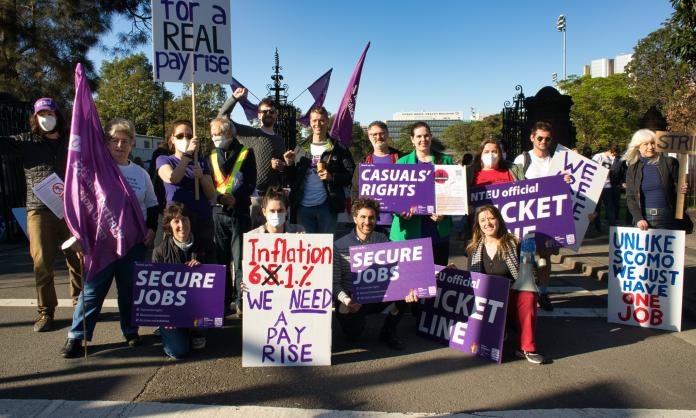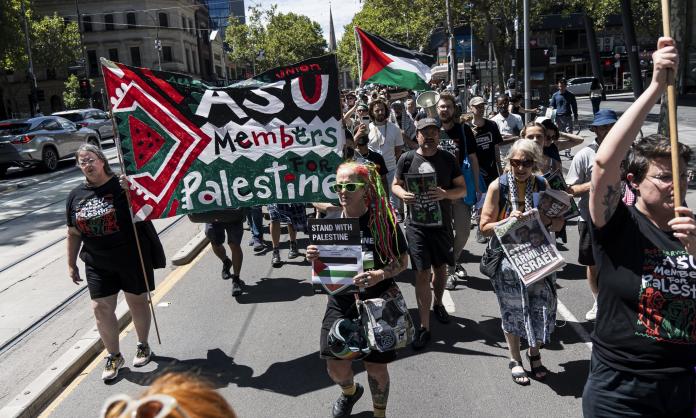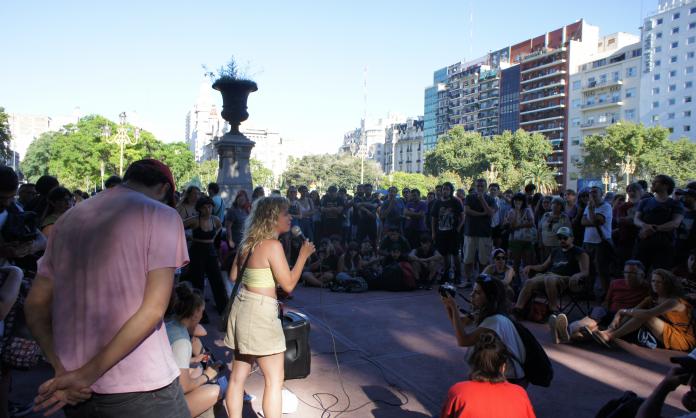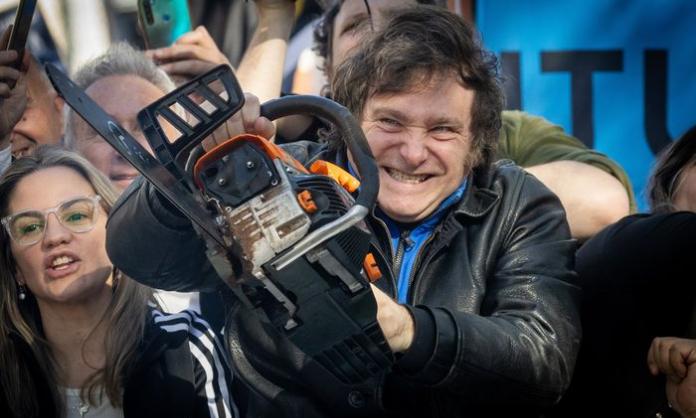Staff at Sydney University struck for 24 hours on 17 August. It was the fourth day of strike action called by the National Tertiary Education Union this year. The major entrances to the Camperdown campus, as well as the Conservatorium of Music, were picketed by staff and students. Once again, the university was a ghost town.
Sydney University management, however, is intransigent.
“There really hasn’t been a lot of progress in bargaining despite it going on for over a year now, and there’s a lot of claims that still haven’t really been discussed. So the pickets are important to bring all of these claims back to light”, Jen Huch-Hoogvliet, a union branch committee member, told Red Flag.
With real wages falling at their fastest pace in decades, staff have demanded a pay rise above inflation, plus more job security, better workloads and an end to hyper-exploitation of casuals. Why should workers’ living standards go backwards while Vice-Chancellor Mark Scott takes home $1.15 million and while the university is sitting on a $1 billion surplus?
“The [NTEU] national executive has said the pay claim is CPI (Consumer Price Index) plus 1.5 percent, but we’re talking about Sydney, one of the most expensive cities to live in”, continued Jen. “We need a pay rise of CPI plus 2.5 percent at a minimum. We’re trying to make up for the effective pay cut we got from the last bargaining round in 2017.
“There are a lot of people who live pay cheque to pay cheque. A small increase in the cost of food or medical expenses or transport is enough to make them go, ‘I’m not sure I can afford that’.”
NTEU Fightback, a rank-and-file group within the union, wanted to fight for the higher pay claim of CPI plus 2.5 percent, but was opposed by the national union office and some members of the campus branch committee. Alma Torlakovic, a socialist and member of the branch committee, told Red Flag:
“With each bargaining round, we insist on not allowing an erosion of hard-won conditions. One condition under attack this round is priority recruitment of internal staff. If management get away with this, it will limit career prospects for professional staff and minimise the redeployment pool—a safety net that we have for staff going through redundancy.”
The strike campaign has helped the Sydney University NTEU branch to grow to the largest size it has been in more than a decade.
“The pickets have been great”, Lucy Nicolls, an organiser with the Sydney University Casuals Network, said. “We need to stand in solidarity at the pickets and show management our power that we can shut the campus down because they couldn’t open every day without us. We need to show management that we’re serious about fighting for better working conditions, better pay.”
Apart from a few miserly scabs, campus was empty all day. Many classes were cancelled, and the few scab classes that did go ahead were online rather than in person.
The picketers convinced many who attempted to enter the campus to support the strike. Many of the pickets turned around cars and potential scabs. One staff member even signed up to the union on the picket.
Ron Clarke, a chemistry lecturer, serenaded the pickets with performances of working-class anthems “Bella Ciao” and “The Internationale” on the French horn.
But the fight is far from over. “Management are not just going to give us our demands on a silver platter”, Alma said. “We’ll need more strike action if we are to win real improvements to our working conditions and living standards.”










